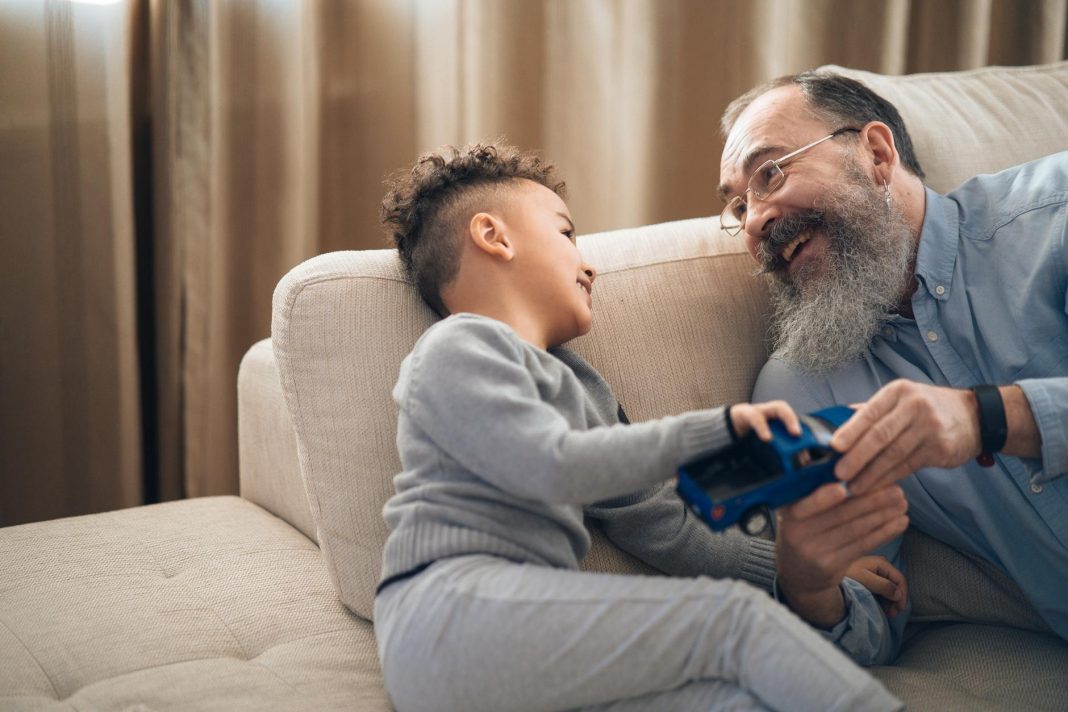Soyons honnêtes, être parent, c'est un peu les montagnes russes. Un instant, vous savourez la joie des petits doigts qui serrent les vôtres, et l'instant d'après, vous devez faire face à une crise de colère de votre enfant qui pourrait rivaliser avec un ouragan. Trouver l'équilibre entre l'amour et les limites, entre laisser les enfants explorer et fixer des limites claires, est un voyage, pas une destination. Ce guide propose des stratégies pratiques pour parcourir ce chemin avec moins de stress et plus de liens.
Comprendre le pouvoir des limites
Les limites ne sont pas une question de contrôle, mais de respect - respect de soi, respect de l'enfant et respect de la dynamique familiale. Elles offrent aux enfants une structure et une sécurité, leur apprenant à naviguer dans le monde de manière responsable. Pensez-y comme à des garde-fous sur des montagnes russes - excitants et amusants, mais essentiels à la sécurité.
Fixer des limites respectueuses implique :
- Une communication claire : Utilisez un langage simple et adapté à l'âge des enfants. Au lieu de "Sois sage", essayez "Range tes jouets avant le dîner".
- Cohérence : Appliquez des limites de manière cohérente, sinon les enfants apprendront à les repousser et à les tester. Il ne s'agit pas d'être rigide, mais d'aller jusqu'au bout de vos attentes (dans la limite du raisonnable !).
- Renforcement positif : Concentrez-vous sur ce que vous *voulez* que votre enfant fasse, et non sur ce que vous *ne voulez pas* qu'il fasse. Prenez-le en flagrant délit de gentillesse et félicitez-le ! Lorsqu'il range ses jouets, dites-lui : "Wow, tu as rangé tes jouets si rapidement ! Je suis très fier de toi !"
- Conséquences logiques : Au lieu de punir, privilégiez les conséquences directement liées au comportement. S'il ne range pas ses jouets, il peut perdre son temps de jeu avec son jouet préféré pendant une durée déterminée.
- Adaptation à l'âge : Ce qui constitue une limite raisonnable pour un enfant en bas âge diffère de ce qui est approprié pour un adolescent. Adaptez vos attentes au stade de développement de votre enfant.
- Flexibilité : La vie est ainsi faite ! Parfois, vous devrez contourner les règles. La flexibilité ne signifie pas l'abandon des limites, mais l'adaptation aux circonstances.
Discipline positive : Guider et non punir
La discipline positive s'éloigne de la punition et se concentre sur l'enseignement et l'orientation. Elle reconnaît que les enfants font des erreurs et que l'apprentissage est un processus d'essais et d'erreurs. Au lieu de réagir par la colère ou la frustration, la discipline positive consiste à comprendre les raisons sous-jacentes du comportement de l'enfant et à le guider vers des choix plus appropriés.
Les stratégies de discipline positive comprennent Améliorez votre vie : Maîtriser la discipline et les limites (sans drame !)
- L'empathie : Essayez de comprendre le point de vue de votre enfant. Est-il fatigué, a-t-il faim ou se sent-il dépassé ?
- Résolution de problèmes : Impliquez votre enfant dans la recherche de solutions aux problèmes de comportement. Demandez-lui : "Que pourrions-nous faire différemment la prochaine fois ?".
- Conséquences naturelles : Laissez les conséquences naturelles se produire chaque fois que c'est possible. Si votre enfant ne met pas son manteau, il risque d'avoir froid (bien entendu, veillez toujours à sa sécurité et à son bien-être).
- Les temps morts (utilisés de manière réfléchie) : Les temps morts peuvent être efficaces, mais ils doivent être utilisés comme une stratégie d'apaisement et non comme une punition. L'objectif est de donner à l'enfant le temps de s'autoréguler.
- Ignorer les comportements mineurs : Toute infraction ne nécessite pas forcément une réaction. Parfois, il est plus efficace d'ignorer un comportement mineur que d'envenimer la situation.
- Attention positive : Accordez beaucoup d'attention positive à votre enfant lorsqu'il se comporte bien. Cela renforce les comportements positifs.
Guidance comportementale : Une approche collaborative
L'orientation comportementale consiste à enseigner aux enfants les compétences et les connaissances dont ils ont besoin pour faire de bons choix. Il s'agit de favoriser l'autorégulation, l'empathie et la capacité à résoudre les problèmes. Il s'agit d'un investissement à long terme qui rapporte des dividendes sous la forme d'enfants bien adaptés et responsables.
Conseils pour une orientation comportementale efficace :
- Enseigner la régulation émotionnelle : Aidez votre enfant à identifier et à gérer ses émotions. Apprenez-lui des mécanismes d'adaptation à la colère, à la frustration et à la tristesse.
- Donnez l'exemple d'un bon comportement : Les enfants apprennent en observant. Soyez un modèle pour les comportements que vous souhaitez voir chez vos enfants.
- Créez une routine prévisible : Les routines prévisibles apportent structure et sécurité, ce qui peut réduire considérablement les comportements difficiles.
- Offrir des possibilités de choix : Donner aux enfants des choix dans des limites raisonnables les responsabilise et les aide à se sentir plus maîtres de la situation.
- Célébrez les réussites : Concentrez-vous sur les progrès de votre enfant, et pas seulement sur ses lacunes. Célébrez ses réussites, aussi petites soient-elles.
- Chercher du soutien : Être parent est un travail difficile. N'hésitez pas à demander le soutien de votre famille, de vos amis ou de professionnels lorsque vous en avez besoin.
Se souvenir de la situation dans son ensemble
L'objectif n'est pas de créer des enfants au comportement parfait, mais d'élever des personnes émotionnellement intelligentes et résilientes, capables de relever les défis de la vie avec grâce et confiance. Fixer des limites et utiliser une discipline positive, c'est construire une base solide de confiance, de respect et de compréhension mutuelle au sein de votre famille.
L'éducation des enfants est un parcours semé d'embûches et d'une grande beauté. Soyez patient avec vous-même et avec vos enfants. Acceptez les défis, célébrez les victoires et rappelez-vous que vous faites de votre mieux. Et c'est plus que suffisant.

